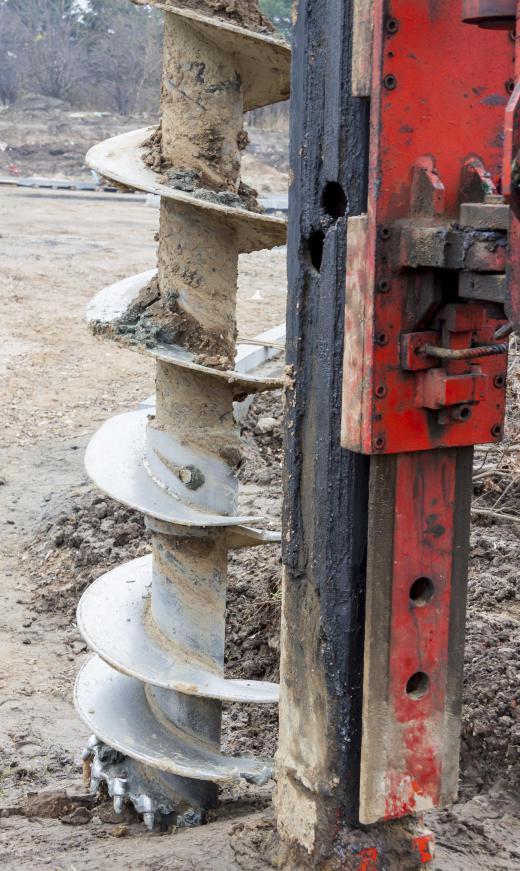A post driver is a device used to set poles or posts into the ground. The post driver applies force to the top of a fence or sign post, which drives it into the earth without the need for digging. While traditional post setting requires the use of a heavy hammer and plenty of hard labor, post drivers require very little manual labor. These machines simply hammer the post from the top, using multiple hits based on terrain and post dimensions. Different types of post drivers can be used to set everything from small fence posts on a farm to large municipal rail or sign supports.
Buyers can choose between hydraulic and pneumatic post driver models. Hydraulic models rely on a fuel-powered engine, and generate driving force using hydraulic fluid. Pneumatic, or air-powered units rely on compressed air cartridges to drive the post into the ground. Both may be programmed to hammer the post until it reaches a specific depth, or manually operated for easy adjustment. Buyers must consider a number of factors when deciding between these two types of post drivers, including things like terrain, post size, and desired depth.

Smaller post drivers or those used in rough terrain may be used in conjunction with an auger. More powerful post drivers are used alone to drive the post without the use of an auger or other digging device. Both the auger and the post driver may be mounted on a tractor or excavating machine. Depending on the model, the device can be mounted on the front, back, or even the side of the tractor. Smaller post drivers are operated by hand, with either one or two people operating the device.
Post drivers offer a number of advantages over digging and setting posts by hand. They allow installers to quickly and efficiently place posts on large projects, and make it easy to install posts in rough terrain or hard soil. A hydraulic or pneumatic post driver also makes it easier to set posts so they are straight and level, rather than trying to level the posts by eye.
For smaller projects, manual methods of post setting are often more effective than using a hydraulic or air-powered post driver. Hand digging allows for greater precision, and may be safer in areas with underground lines or pipes. Manual post setting also costs less than using machine-powered methods, and allows for greater access and control in small areas.
